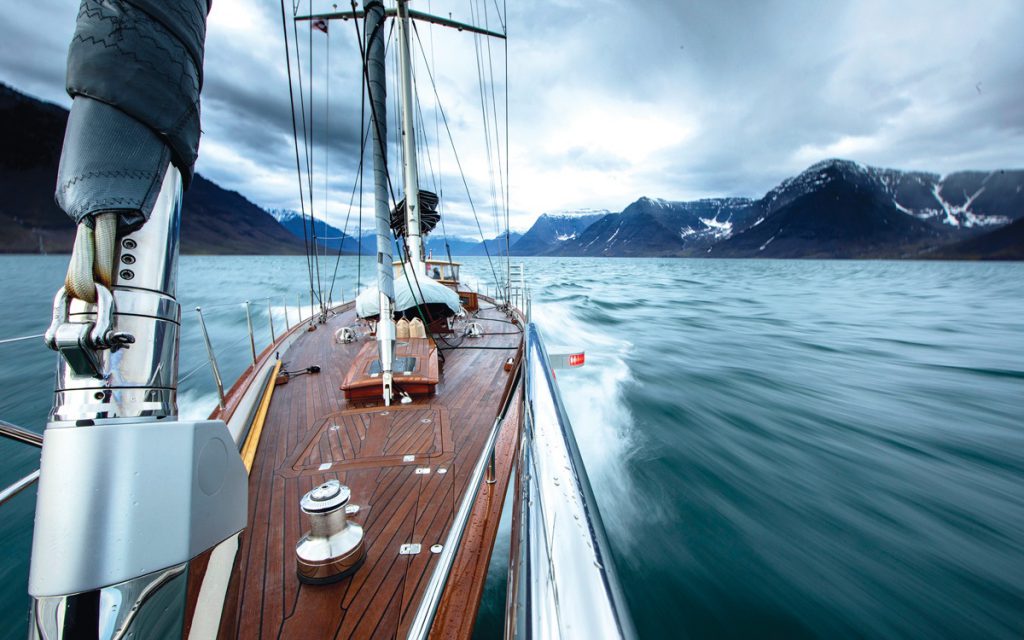 These extraordinary photos show Greenland in all its beauty, shot during a unique voyage on Mark Rohr’s 90ft sloop, one which helped spark this owner’s investigations into climate change in the marine environment
These extraordinary photos show Greenland in all its beauty, shot during a unique voyage on Mark Rohr’s 90ft sloop, one which helped spark this owner’s investigations into climate change in the marine environment
Our thirst for adventure is as unquenchable as ever. In the marine world, that desire to escape the beaten path seems only to be increasing. There are more and more large exploration-style vessels launching, the commissions of owners wanting to see for themselves the incredible sights that cruising in high latitudes offers.
When we first set eyes on these pictures of Acadia voyaging in Greenland, part of an extensive collection from acclaimed marine photographer Onne van der Wal, we were hooked. And the more we found out about this cruise, the more interested we became.
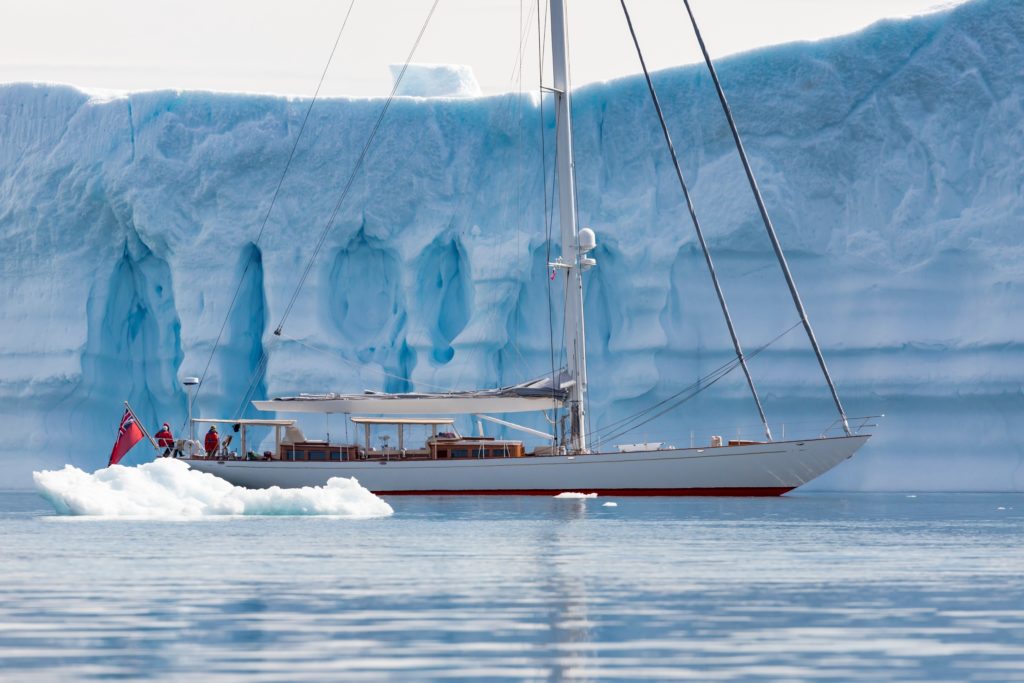
It’s rare for an owner sailing a Truly Classic sloop to want to get acquainted with icebergs. But Mark Rohr had a further agenda: to better understand the science behind glaciers and icebergs, to speak to the locals and scientists and to see first-hand how global warming is affecting the ocean, its acidity and ecosystems.
We caught up with Rohr, who, out of a desire to spread awareness about ocean conservation, was happy to share the details of his mission to western Greenland.
Rohr, the CEO of a Fortune 500 listed technology and materials company in Texas, explained that his three-week trip above the Arctic Circle was planned to visit the most productive glaciers in Greenland, if not the world, and gain a sense of the environment and people. And how, with the help of van der Wal, he wanted to capture images of coastal fjords, ice production and glacial melts, while studying animal and plant life in this transition zone.
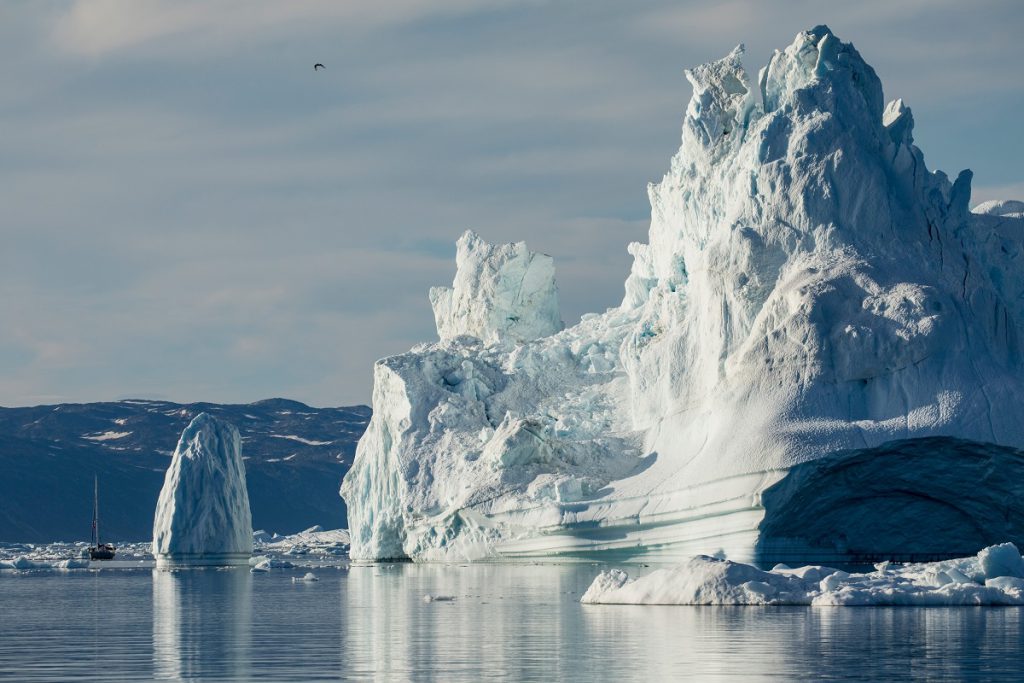
“I am a closet oceanographer,” Rohr admitted when I asked about his desire to commit to this mission, “and I’ve always been very interested in oceanography and the sea and have always sailed.”
I had to ask about the choice of yacht. A 90ft aluminium Hoek-design with traditional overhangs is not the sort of craft usually associated with high latitudes sailing. “She’s very well built,” Rohr explained, “with thoughtful systems and safety in mind, able to sail well above the Arctic Circle and we’ll soon head to Panama, Galapagos and the South Pacific and I hope one day we’ll do Antarctica.”
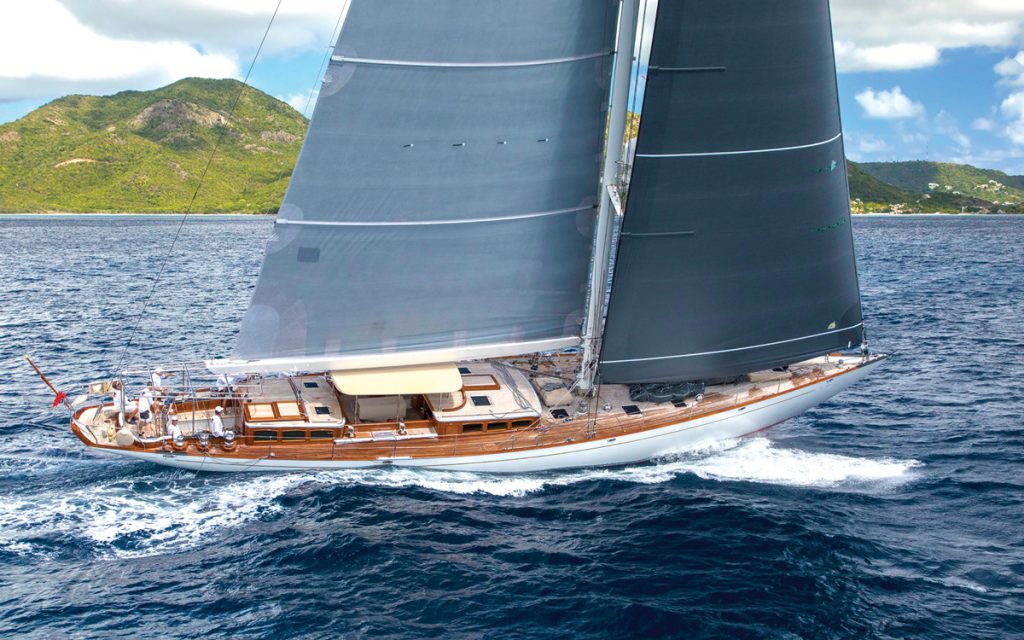 The mission
The missionAfter more than a year’s planning, Acadia departed Nuuk in late July and set sail for Disko Bay, 400 miles to the north. Why the particular interest in Greenland? I wondered. Rohr explained that it was all to do with increasing acidity in the oceans.
“Elevated levels of CO2 in the atmosphere promotes excess formation of carbonic acid in the ocean. This acid effectively lowers the pH and locks up the carbonate used by marine animals to make shells, or form coral skeletons. The lower the pH the more difficult it becomes for these animal and plankton to thrive. Big seasonal swings in ocean pH normally occur in the Arctic where you have dramatic changes in temperature, salinity, movement of ice into the ocean and all the nutrients that come with it.
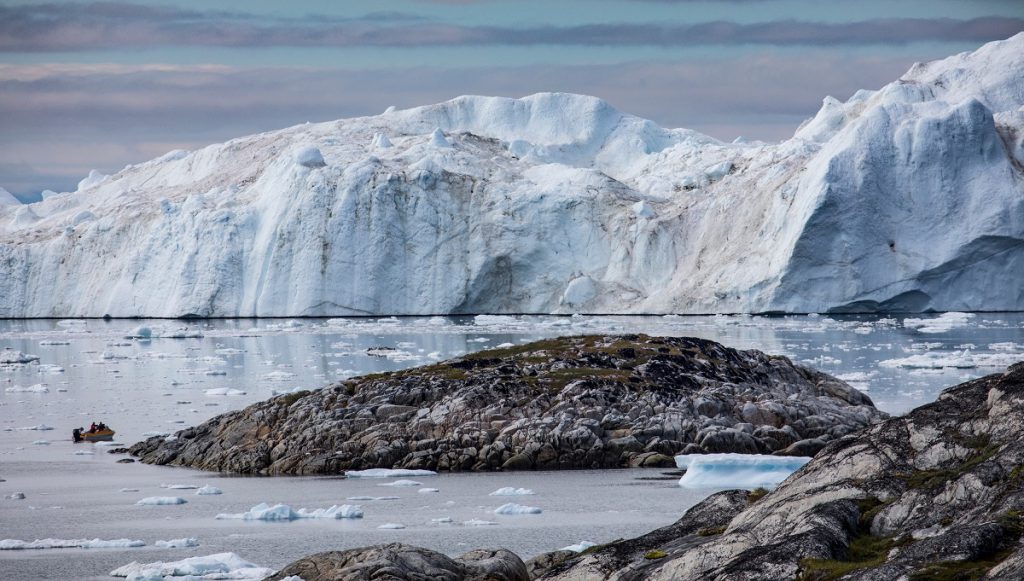
“So scientists up there are studying marine algae to see how different species handle different ocean acidification, with a view to what’s going to happen if you look forward 20 years, 50 years or hundreds of years…
“What interested me about Greenland and Disko Bay were these interactions and learning from them to help us when we visit places like the Galapagos, where we hope to look at the naturally high levels of acidification around ocean vents and how marine species are dealing with a more acidic environment.
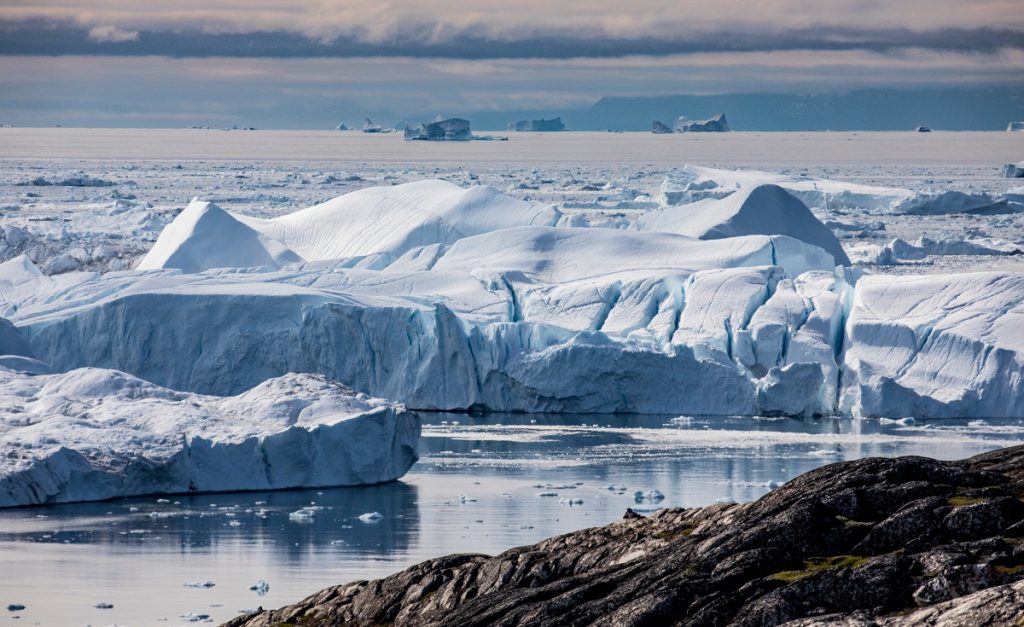
“So we spent some time in and around the glaciers to really get a sense of global warming and what impacts people see, and also to try to tie this back to ocean acidification.”
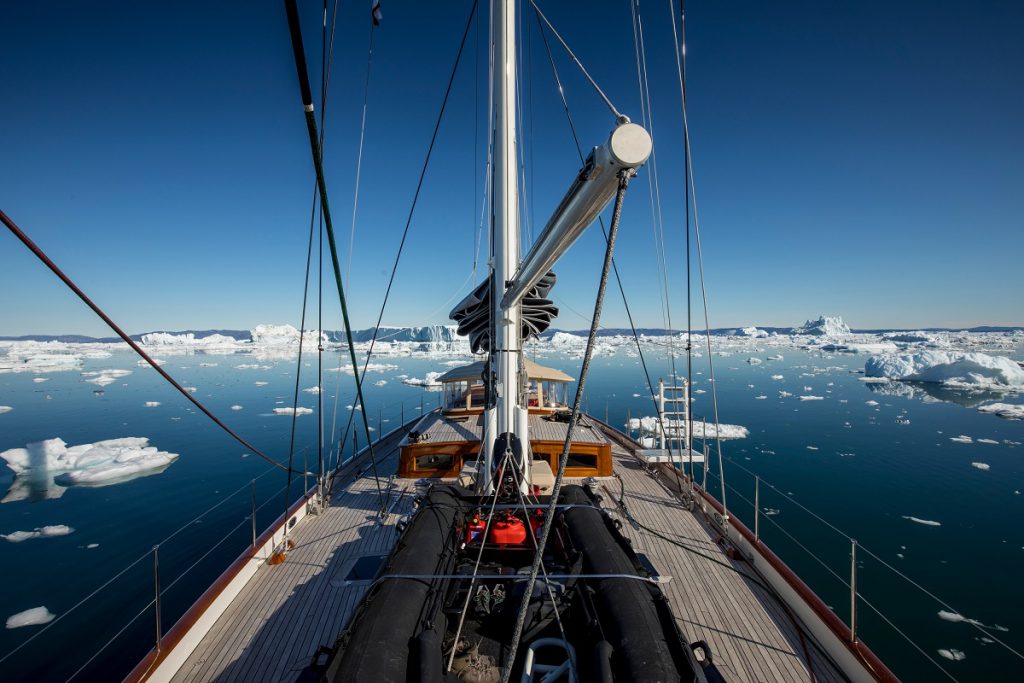 Breaking down ‘bergs
Breaking down ‘bergsGreenland, the world’s largest island, covers an area of roughly 2.2 million km2. The ice cap at its centre, second only to Antarctica’s, is over 3.2km thick, covers an area of 1.7 million km2 and is the only ice sheet in the Northern Hemisphere that remains from the ice age.
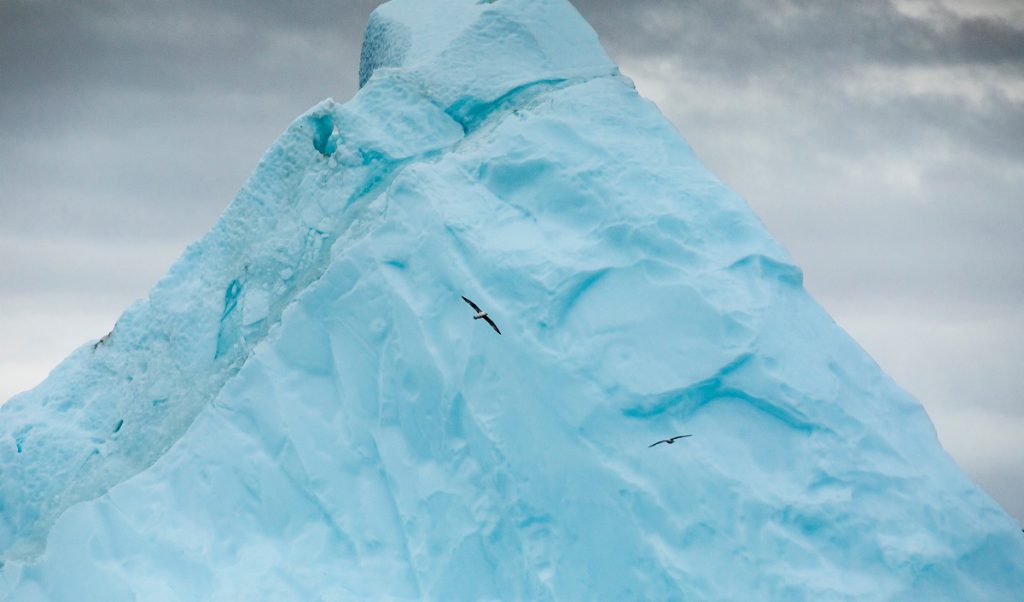
Ice flows gradually from the centre of the cap toward the sea. The area around Disko Bay and the Uummannaq Fjords represents the primary western route to the sea and some estimate that half of the total Greenland ice loss occurs from this area.
One of the fastest ice streams in the world is Sermeq Kujalleq, which terminates in the inner part of the Ilulissat ice fjord. This moves at an astonishing pace of roughly 40m per day, with an estimated 46 million km3 of ice calving into the fjord per year – the equivalent annual water consumption of the United States.
The large calved icebergs move down the fjord eventually entering Disko Bay and its surrounds. The glacier face and ice fjord are a unique natural wonder and for this reason it was named a UNESCO world heritage site in 2004. Since then the glacier tongue has receded more than 20km toward the inland ice face and the velocity of the glacier has almost doubled.
The marine ecosystem is strongly influenced by the ice movement through the fjords and into the sea. Subglacial melting adds nutrients to the sea, supporting plankton blooms. Halibut, Northern shrimp, Greenlandic shark, ringed seals, fin, minke and humpback whales are common species found in and around the ice at the mouth of the fjord.
As the ice enters Disko Bay it is impacted by currents and winds that push the ice to the north, eventually finding its way across to Baffin Island where the Labrador current takes the icebergs south along the Labrador Coast to Newfoundland and eventually out into the Atlantic. It is believed among scientists that the Titanic was sunk from a Kanga Glacier iceberg following this route.
Ice typesThere were three categories of ice or icebergs that Acadia routinely encountered: snow-based, melt water-based and basal-based. Coming in all shapes and sizes, the term ‘iceberg’ officially refers to chunks larger than 5m/16ft across.
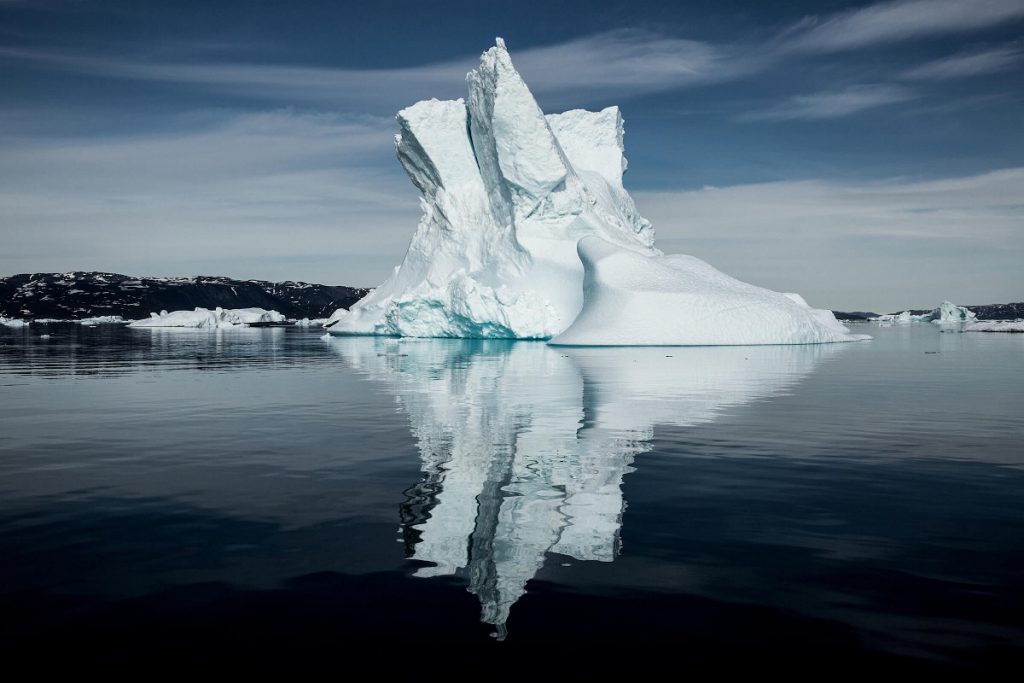
Most icebergs are white in colour, the result of light reflection on the air contained within the frozen and compacted snow. The snow-based icebergs sometimes contain so much ancient compressed air that the water around them fizzes as if it were carbonated.
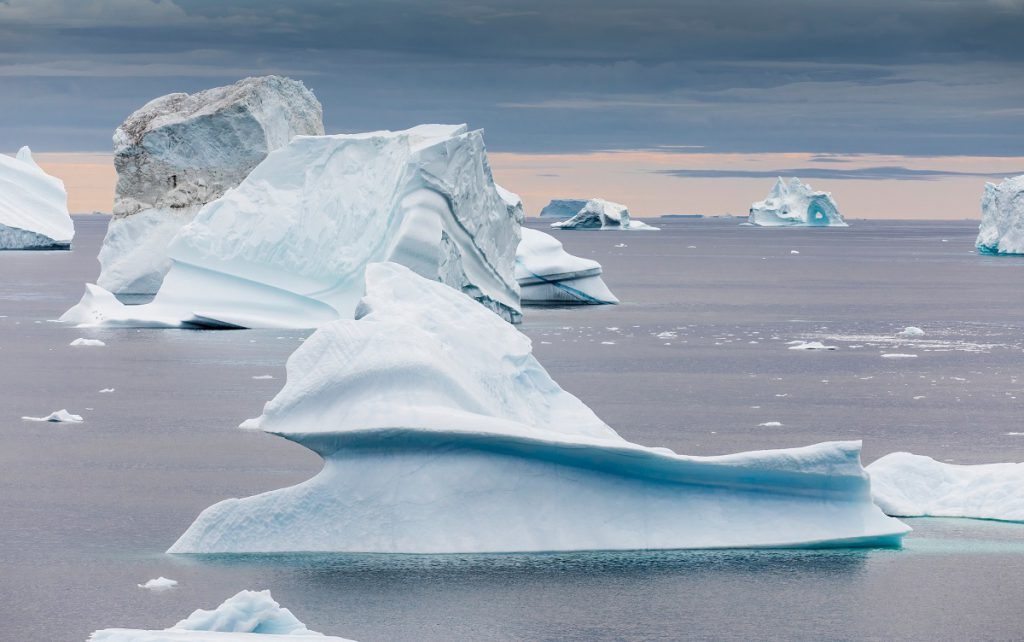
Within icebergs it’s also common to see turquoise or blue ice streaks. These streaks are caused by melt water (free of air) trickling through the glacier and refreezing. Melt water ice is very compacted and hard, and can be razor-sharp.
The sides and base of the glacier that rubs along the wall or floor pick up dirt and rocks, so icebergs can also contain these dark or dirty basal deposits.
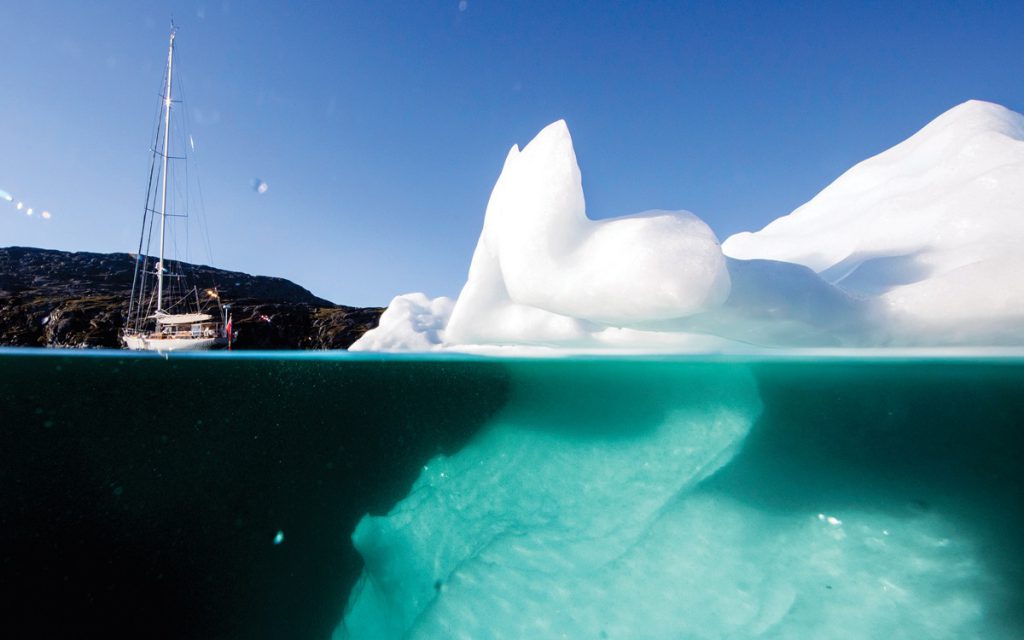
On average about 17% of an iceberg is visible above sea level, hence the infamous term ‘tip of the iceberg’. Icebergs predominately made of basal material or melt water are denser and float lower in the water. Pure melt ice is almost translucent and seems to sit on the water with little protruding above the surface.
Melt water ice represents the greatest hazard to a vessel like Acadia. While on this expedition the crew encountered thousands of icebergs, products of the enormous Greenland icecap and thousands of years of snow and ice accumulation. It’s breathtakingly beautiful and at the same time concerning as rapid changes and melt rates seem to be accelerating.
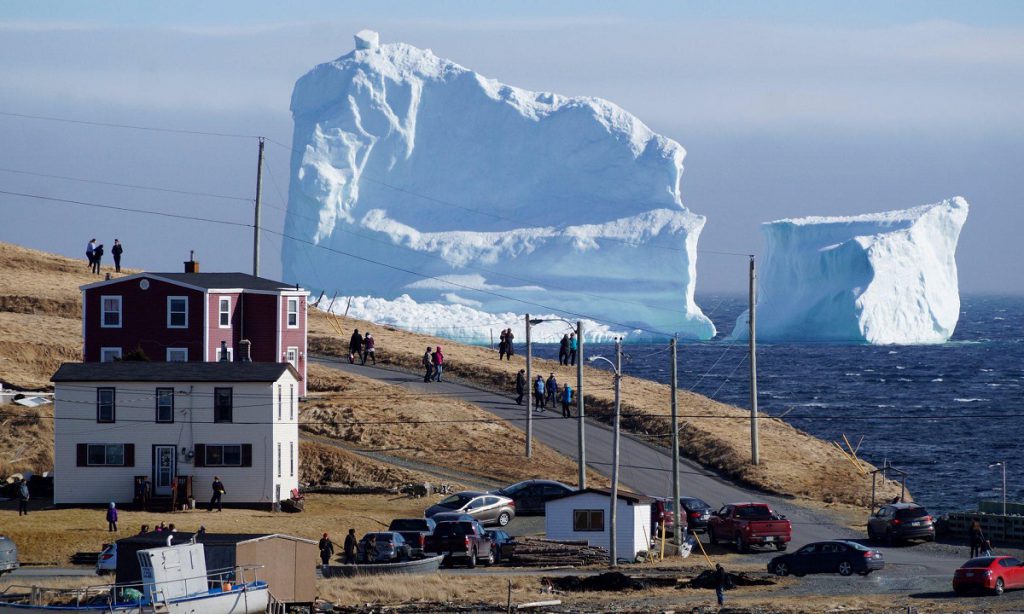
Reviewing the data collected over the last decade, it’s easy for those on Acadia to see evidence of the dramatic change under way. Scientists at the Arctic Station and from research institutions around the world studying Disko Bay and surrounding glaciers are providing tremendous insights into the impact of climate on this fragile ecosystem.
Acadia’s Disko cruiseRohr describes Acadia’s Greenland voyage in detailed notes, from which we have taken extracts: ‘Acadia stopped at the mouth of the Evighed Fjord and journeyed 50km inland through the fjord’s winding passages and dominating ice-capped mountains, to meet our first and closest encounter with a calving glacier.
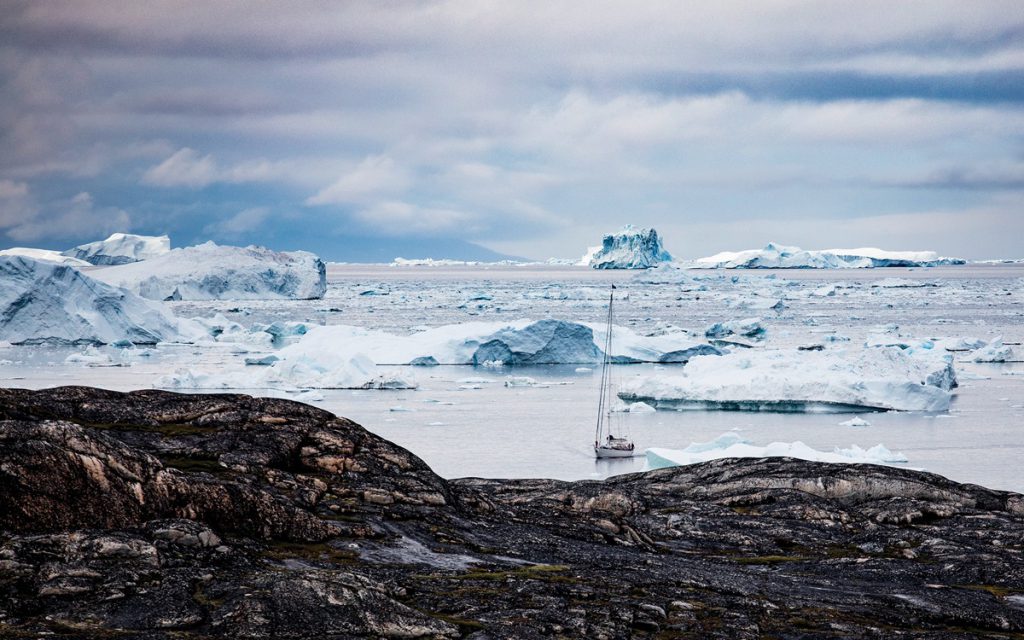
‘The next stop was Sissimut, the second largest town in Greenland, which has been inhabited for over 4,000 years. It’s a beautiful and successful fishing community with a collection of homes and buildings nestled in a valley and a spectacular natural harbour. Our Inuit guide, Nivi, shared her stories of life in the community and described how it has changed over the years.’
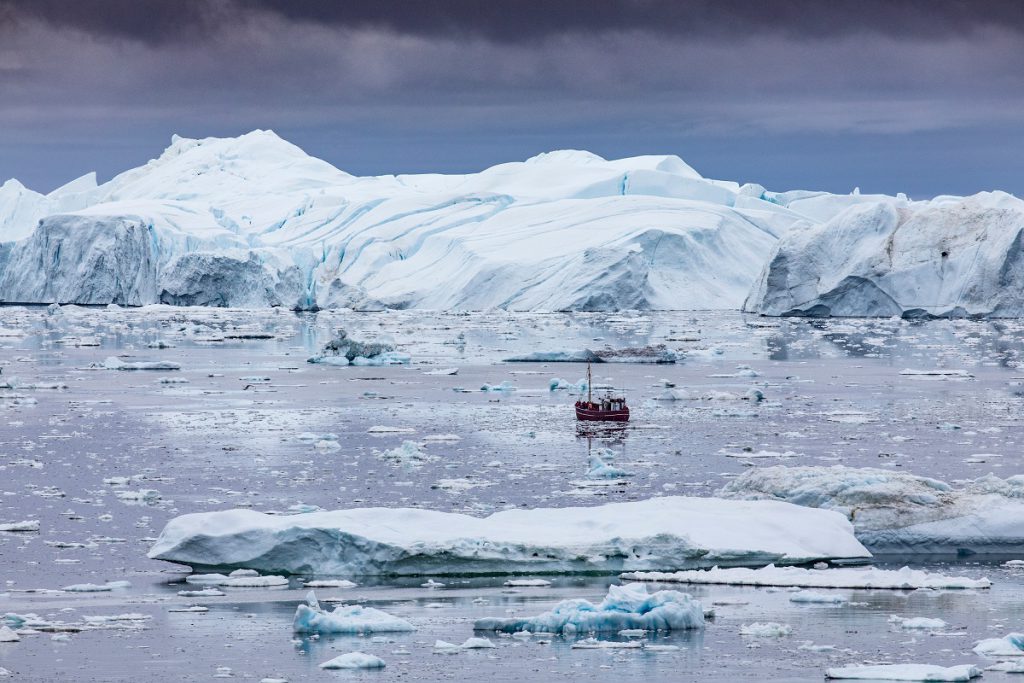
Acadia sailed on northwards towards the destination of Disko Bay and the settlement/harbour of Ilulissat. ‘Entering and exiting Ilulissat is a challenge for vessels like Acadia. The ice pack from the Kangia Glacier and ice fjord is very dense for 10-15km out into Disko Bay. Acadia, normally at home at sea, was out of her element in the pack ice. It took us six or seven hours to travel the 10km to the relative safety of Ilulissat harbour when first entering the area.
‘While crawling along and pushing ice out of way, we were regularly passed by Inuit fisherman in their small skiffs, greeting us with a friendly wave. Ilulissat, founded in 1741, is today is the eco-tourism mecca of Greenland and at its heart a fishing and hunting community.
‘We had tea with a local Inuit woman who told us stories of her life and family history, then visited a local hunter and fisherman while he fed his 18 dogs and shared fascinating insights. The area is peppered with ancient Inuit settlements, many dating back to 4,000BC, highlighting the impact of this incredible bay and the Arctic on the legacy of mankind.
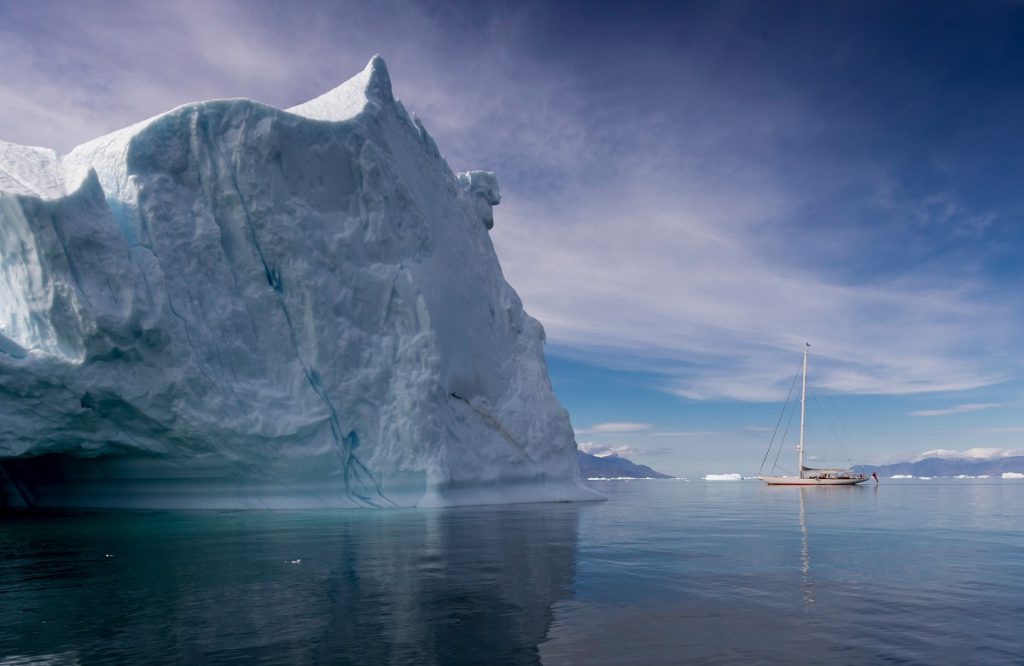
‘Ilulissat’s major calling card is Kangia Glacier, a UNESCO World Heritage site and one of the fastest calving glaciers in the world, advancing at about 40m per day. Ice discharge from this glacier fills the fjord and much of Disko Bay with enormous icebergs, many the size of a city block.
It’s almost impossible to comprehend the grand scope of this glacier system and the enormity of its contribution on the environment.
‘Disko Island across the bay is home to the Arctic Station and a number of beautiful fjords full of bird and animal life. A research arm of the University of Copenhagen, established in 1907, this centre sponsors and hosts researchers from around the world studying the glaciers, animal and plant life – a fantastic group of people conducting critical research to help build knowledge about climate change.
‘Claushavn is a small community of 90 people just south of the ice fjord, which became known by Acadia as whale central. Here fin, minke and humpback whales feed on the capelin, northern krill and plankton in these rich waters. Daily lunge feeding displays a co-ordinated behaviour that is a remarkable example of beauty and efficiency.
‘We worked with Danish guide Mia Olesen to engage with the people of Greenland to learn more about their life and the Inuit culture.
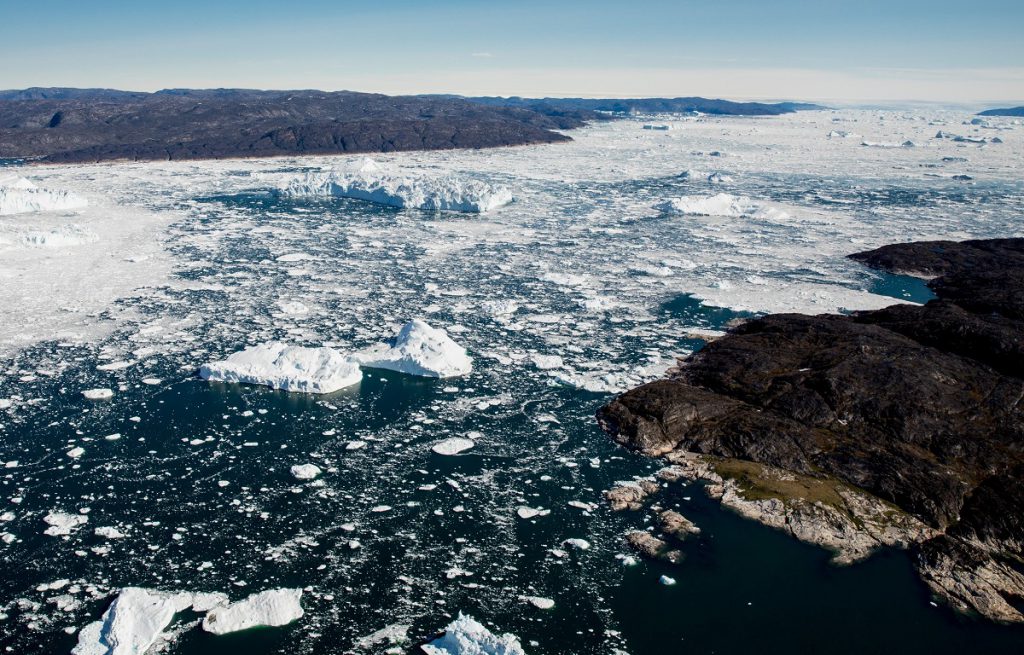
‘Naturalist guide Jeppe Lang helped build our appreciation of the ice and animal dynamics of the region, while Professor Per Hansen of the Arctic Station helped expand our knowledge of the interaction between plant and animal life as scientists study the effects of climate change.’
What surprised Rohr about this area of Greenland were the people: “Everyone we met, the Inuit families, the men and women from the Copenhagen marine institute, the scientists and the fishermen. Everybody was stunningly wonderful – very welcoming, very engaging and so willing to invite us in and share their stories.”
The Acadia programmeAcadia launched two years ago and this voyage was the first of an extensive programme of cruises revolving around marine studies. The crew includes highly experienced skipper Heinrich Mueller, mate Brent Levenson and expedition coordinator Ali Hay.
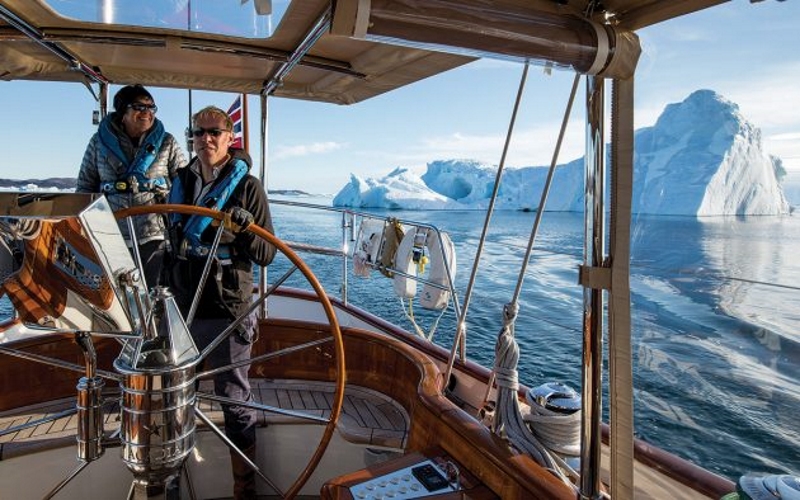
“If you’re interested in oceanography you have to go to the transition zones to really get a sense of what’s going on,” Rohr explained when asked about the boat’s programme.
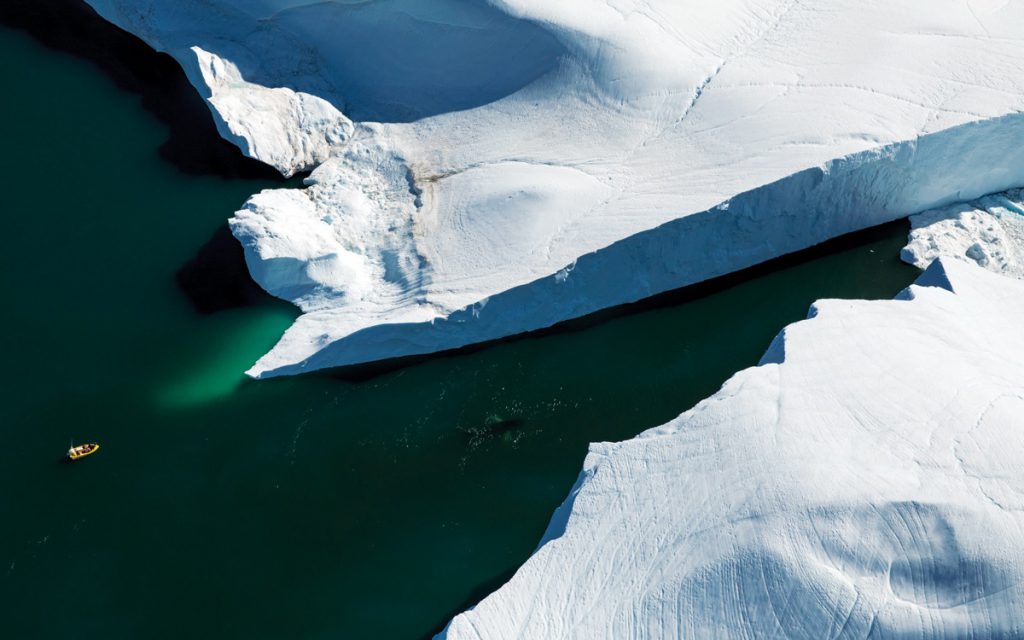
“So going to the Arctic and Antarctic, deep in the Pacific, areas like Panama, where you’ve got a combination of Humboldt current and deep ocean with mangrove swamps and heavy rain water – it’s those transition areas where you really see the most life and the most engagement of species. These are the areas where I think we can learn the most and gain the best understanding of what’s going on.”
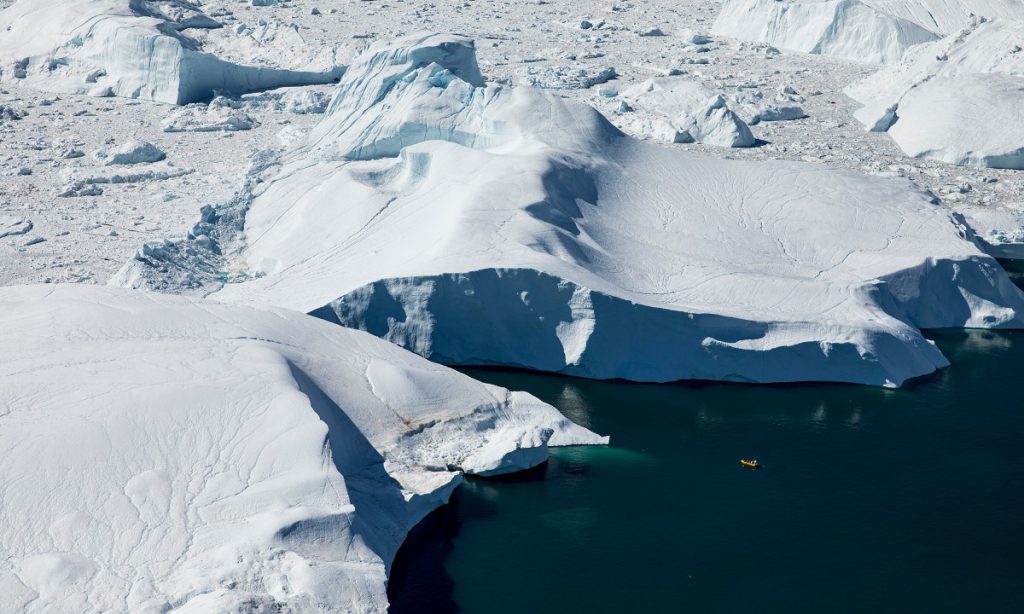
Acadia was heading to Panama at the time of writing. “We’ll spend several weeks at the Institute for Tropical Ecology in Bocos Del Toro, studying coral and coral diseases to build expertise we hope to use when we get into the South Pacific,” Rohr explains.
“Then we go through the canal to Galapagos where we’ll be working with scientists studying the impact of ocean acidification around natural carbon dioxide vents. These vents create elevated levels of acidity and can provide a glimpse of our future and the impact on flora and fauna.”
The plan after that for Acadia is to sail to Cuba, “where we’re supporting a scientist studying Elkhorn coral, coral ecology and the impact of pollution and ocean warming,” says Rohr. And in early 2020 Acadia will transit back through the Panama Canal to sail the South Pacific. It’s a busy but fascinating schedule.
The message“We are very fortunate to have an opportunity to sail around the world, interact with so many fascinating people and learn from their experiences,” Rohr concluded.
“I hope Acadia can play a role in elevating awareness of the fragile nature of our marine environment and through that help get others involved to do what they can to protect the oceans and life on earth. We’re just trying to elevate awareness and to be honest we’re just getting started.”
by Toby Hodges